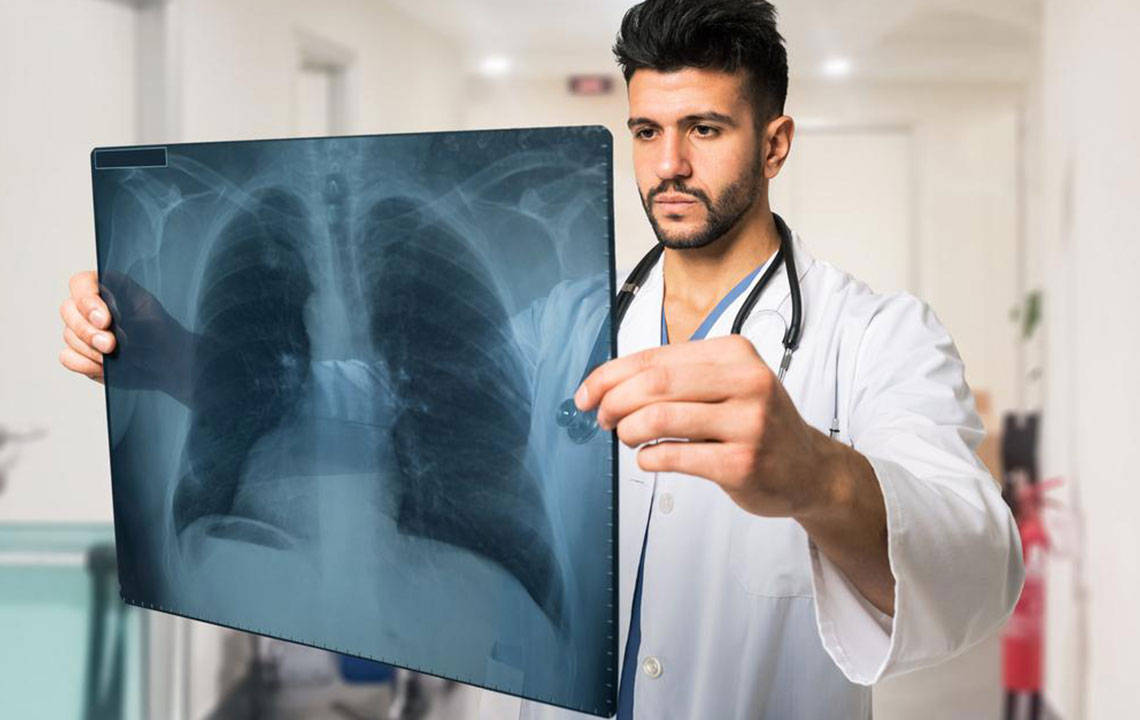Understanding Pulmonary Fibrosis: Symptoms, Diagnosis, and Treatment Approaches
Pulmonary fibrosis is a complex lung disease characterized by scarring of lung tissue, leading to difficulty in breathing. Early recognition of symptoms such as dry cough and shortness of breath, combined with comprehensive diagnostic procedures like HRCT and lung biopsies, is critical for effective management. Treatment options including antifibrotic medications, oxygen therapy, and pulmonary rehabilitation aim to enhance quality of life and slow disease progression. Awareness and early intervention are key to improving outcomes for patients with pulmonary fibrosis, a disease that significantly impacts respiratory health worldwide.

Understanding Pulmonary Fibrosis: Symptoms, Diagnosis, and Treatment Approaches
Pulmonary fibrosis is a serious and often debilitating lung disease characterized by progressive scarring of lung tissue, which impairs the lungs' ability to effectively transfer oxygen into the bloodstream. This condition affects individuals across different age groups but is more commonly diagnosed in middle-aged and older adults. The scarring causes the lung tissue to become stiff, making it increasingly difficult for lungs to expand and contract during breathing, leading to significant respiratory challenges. The severity and progression of pulmonary fibrosis can vary greatly among patients, and in some cases, the exact cause remains unknown, resulting in what medical experts term idiopathic pulmonary fibrosis.
The primary hallmark of pulmonary fibrosis is the development of scar tissue, which replaces healthy lung tissue. This process often results from prolonged exposure to harmful airborne toxins such as cigarette smoke, environmental pollutants, certain occupational exposures, and exposure to specific chemicals. In cases where no clear cause is identified, the condition is classified as idiopathic pulmonary fibrosis (IPF). The progression of the disease can be unpredictable, and without prompt diagnosis and management, it can lead to severe respiratory failure.
Understanding the symptoms of pulmonary fibrosis is crucial for early detection and management. However, symptoms can be subtle initially, often leading to delays in diagnosis. Typical signs include a persistent dry cough that doesn't resolve with usual treatments, ongoing shortness of breath especially during physical activity or even at rest in advanced stages, fatigue or exhaustion, unintended weight loss, muscle and joint pain, and clubbing of the fingers—an abnormal swelling or curved appearance of the fingertips. Some patients may experience more rapid deterioration in health, necessitating urgent medical interventions such as mechanical ventilation or oxygen therapy.
Accurate diagnosis of pulmonary fibrosis involves comprehensive medical evaluation. Healthcare providers consider multiple factors including patient age, lifestyle habits like smoking, occupational and environmental exposure history, medication and medication adverse effects, existing health conditions such as autoimmune disorders, family history of lung disease, and the duration and progression of symptoms. Diagnostic procedures are pivotal in confirming the presence and extent of fibrosis.
Key diagnostic tools include chest X-rays, which can reveal patterns consistent with fibrosis, but more detailed imaging like high-resolution computed tomography (HRCT) scans is usually preferred for a definitive assessment. Pulmonary function tests are vital for measuring lung capacity and the lungs' ability to transfer oxygen into the blood. Blood tests and blood gas analysis help evaluate oxygen levels and identify associated conditions. In some cases, invasive procedures such as lung biopsies, bronchoscopy, or thoracoscopy are conducted to obtain tissue samples for microscopic examination. The combination of these assessments allows healthcare providers to diagnose pulmonary fibrosis accurately and assess disease severity.
Managing pulmonary fibrosis aims to alleviate symptoms, improve quality of life, and slow disease progression. Currently, treatment options are limited and primarily focus on pharmacological therapy, supportive care, and, in some cases, lung transplantation. Medications such as antifibrotic drugs can help reduce the progression of scarring in the lungs. Oxygen therapy is frequently prescribed to manage hypoxia and improve daily functioning. Pulmonary rehabilitation programs, which include exercise training and education on breathing techniques, can enhance respiratory capacity and overall well-being.
Due to the complex and progressive nature of pulmonary fibrosis, early detection is vital. Patients are encouraged to avoid environmental toxins, cease smoking, and adhere strictly to medical advice. Regular follow-up and monitoring are essential for assessing disease progression and adjusting treatment plans accordingly. In advanced cases, lung transplantation remains the only definitive treatment option for eligible patients, offering a chance for improved quality of life.
In conclusion, pulmonary fibrosis is a challenging disease with significant impacts on respiratory health. Recognizing the symptoms early, undertaking proper diagnostic assessments, and adhering to prescribed treatment regimens can greatly influence disease outcomes. Advances in medical research continue to improve understanding and management options, offering hope for better quality of life for those affected by this condition. Raising awareness about risk factors, symptoms, and the importance of early intervention is essential in combating the global burden of pulmonary fibrosis.





